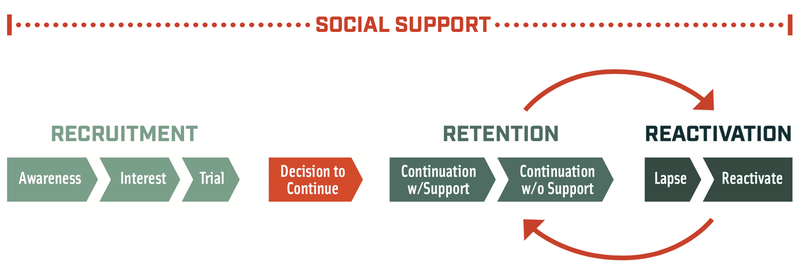Background
Table of Contents
The decision for an individual to participate in and ultimately adopt an outdoor recreation activity usually does not happen due to a single event but rather from a process. The nationally recognized Outdoor Recreation Adoption Model (ORAM) shows the steps a person goes through from being completely unaware of an activity, all the way to becoming a lifelong participant (Figure 1). To achieve the goal of creating lifelong participants in outdoor activities, TPWD and its partners need programs and connections to facilitate movement of participants through every stage of the process.
To do this, TPWD mapped all the existing R3-related programs against the ORAM, identifying which stage(s) of the model each program addresses. Staff also identified the target audiences for each program, and whether the program has measurable outcomes. See results of this mapping exercise.
Figure 1: The Outdoor Recreation Adoption Model

How the Plan is Organized
This R3 Plan outline is built around four pillars:
Within these pillars, the plan has the following nested structure:
- Goal – What is the department trying to achieve with the R3 effort? What is the goal’s purpose?
- Objective – Specific things the department wants to accomplish to achieve the goals.
Metric – How will the department measure success?
Target Audience – At whom are the department’s efforts directed? - Timeframe – When does the department expect this to occur?
- Strategy/Action/Task – Nested layers of actions that must be completed.
Texas R3 Vision
Increasing participation in the outdoors is an ongoing process and a strategic approach is needed to develop successful R3 efforts as part of TPWD’s overall agency mission. Commitment from partners and pooling of resources are imperative in implementing the strategies of this plan. The aspirational outcomes the department seeks for this plan are to:
- Create lifelong participants in hunting, fishing, boating and shooting sports
- Expand resources to successfully deliver nature-based conservation and recreation
- Increase public support for hunting, fishing and shooting sports